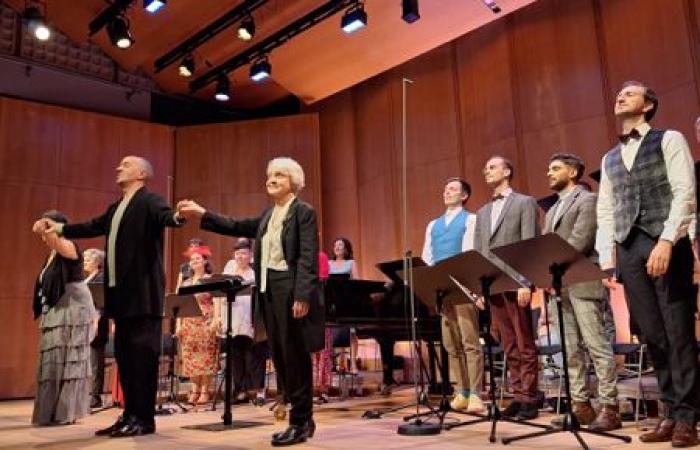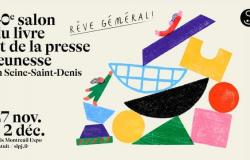Echoing the very beautiful retrospective “Caillebotte, painting men” which it presents until January 19 (1), the Musée d’Orsay commissioned Hervé Niquet and the Chœur du Concert Spirituel to create a program “Caillebotte and music », presented two days after the opening of the exhibition, for which the chef and his singers joined forces with Marie-Josèphe Jude and the actress and great figure of the Comédie Française Danièle Lebrun. The boss of the Concert Spirituel had dreamed of collaborating with the latter for a very long time. It’s now done – and done wonderfully!
“Caillebotte and music”? It is rather a portrait of Gustave Caillebotte (1848-1894) par the music that we discover through a bouquet of skillfully composed choral pieces, which accompanies the reading of texts (articles, letters, an extract from Proust, etc.) that are just as well chosen. Nothing didactic, heavy, but a portrait in small touches, full of tact, humor, sensitivity, during which we eagerly await the next intervention of the reciter.
The taunts of which the “Impressionists” were the target are obviously mentioned, as is the obtuse character of certain members of the Fine Arts administration but, more importantly, the painter’s sense of friendship stands out (by listening to the actress reading a missive, we have the impression of sitting at the Café Riche next to Caillebotte and Pissarro’s table), her taste for water sports (skiffs and boaters are there!) and, even more, for gardens and horticulture. This Madame Isaac Pereire rose, prized by gardeners and confectioners alike, Danièle Lebrun really gives us the impression of smelling it…
G. Caillebotte : Boaters (Canoters rowing on the Yerres)1877
Private collection / Bridgeman Images
As for the music, Martial Caillebotte (1853-1910), composer and younger brother of Gustave, is present only with an extract of his Psalm 132 and theBallet tune No. 2 for piano (where the art of color by Marie-Josèphe Jude works wonders). It is not that there is a lack of material and quality on this side, recordings by Michel Piquemal with the Vittoria Choir demonstrated this a dozen years ago, but Hervé Niquet preferred to play the card of great diversity in the selection of authors. It focuses on contemporary pieces by the painter, while not hesitating to go beyond chronological limits with the much forgotten Jacques de La Presle (1888-1969) whose Summer evening (carried by the pianist’s starry keyboard) and Avril (from Two spring choirs) turn out to be very situational.
© DR
From the ardor of an extract from the Pandora by Pierné with the heady fragrances of Saint-Saëns in Flowers and Treespassing through the morning light of Dubois and its Removal of Proserpina or the wonderful Birth of Venus by Fauré, among others, Niquet and his troupes, tireless advocates of the French repertoire, appear particularly at ease. Moments of frank lightness also occur with Messager and Lecoq (the Choir of Conspirators of the Daughter of Madame Angot). As for the Canticle by Jean Racine of Fauré and in No. VII of the Seven Words of Christ by Gounod, they echo the early death of the composer, which the narrator modestly suggests by evoking a solitary garden… A moment as modest as it is moving, just like this “Caillebotte and music”.
The evening of October 10 marked its creation, with some small, absolutely venial adjustment faults which did not in the least taint its full success. Warmly received, we hope that it will quickly be taken up in other rooms!
Alain Cochard
Paris, Auditorium of the Musée d’Orsay, October 10, 2024
Photo Herve Niquet © Henri Buffetaut







